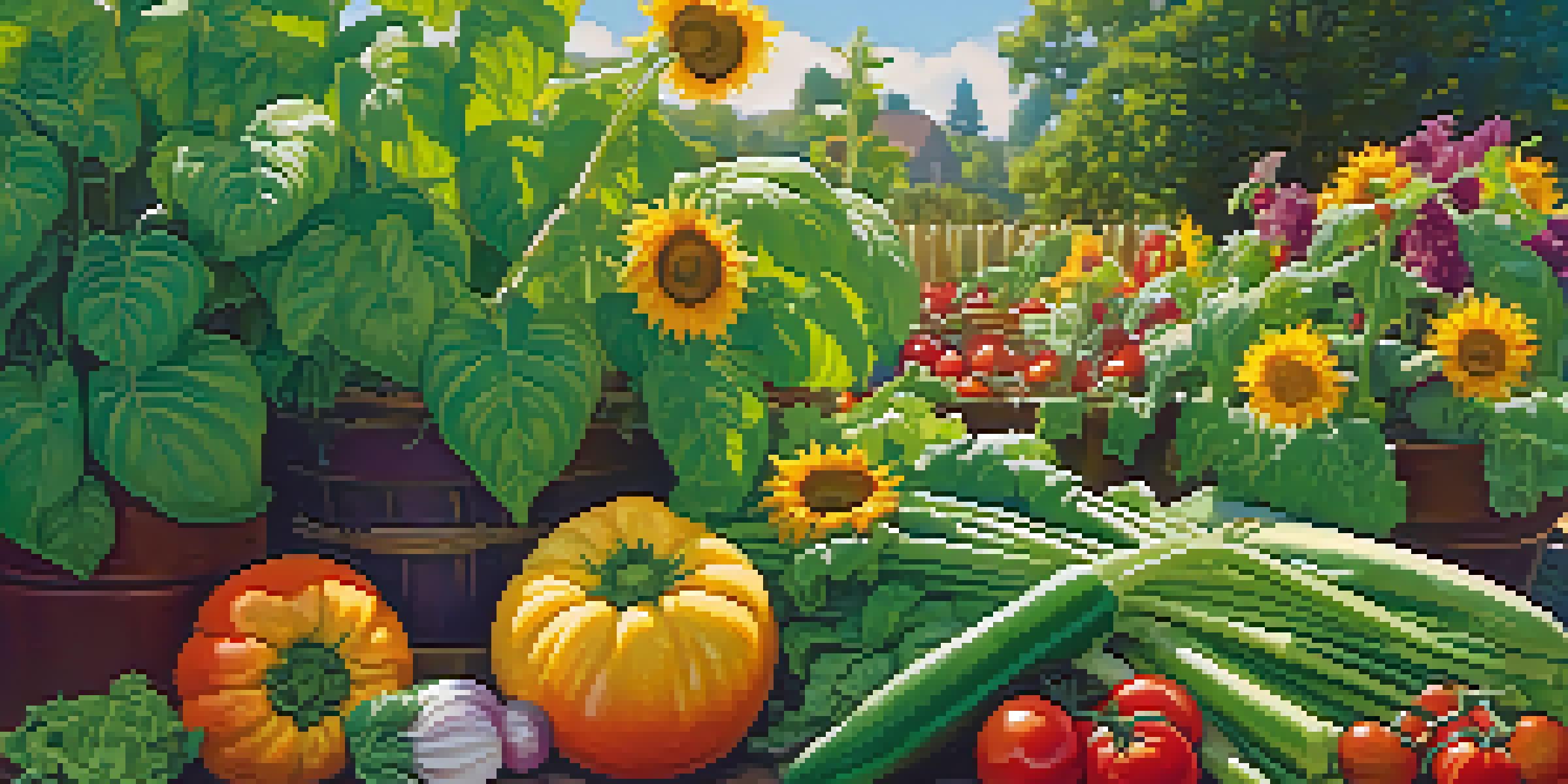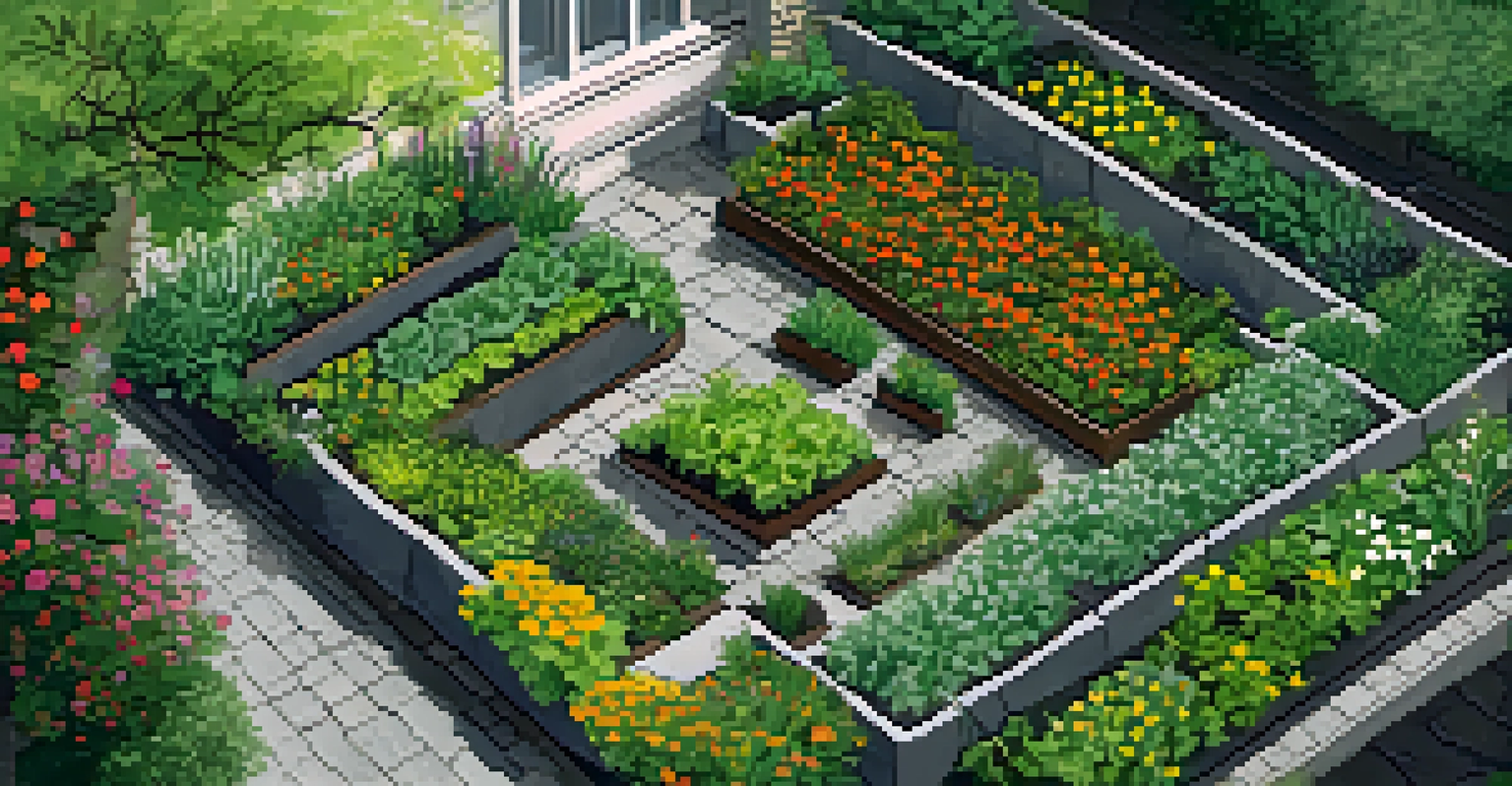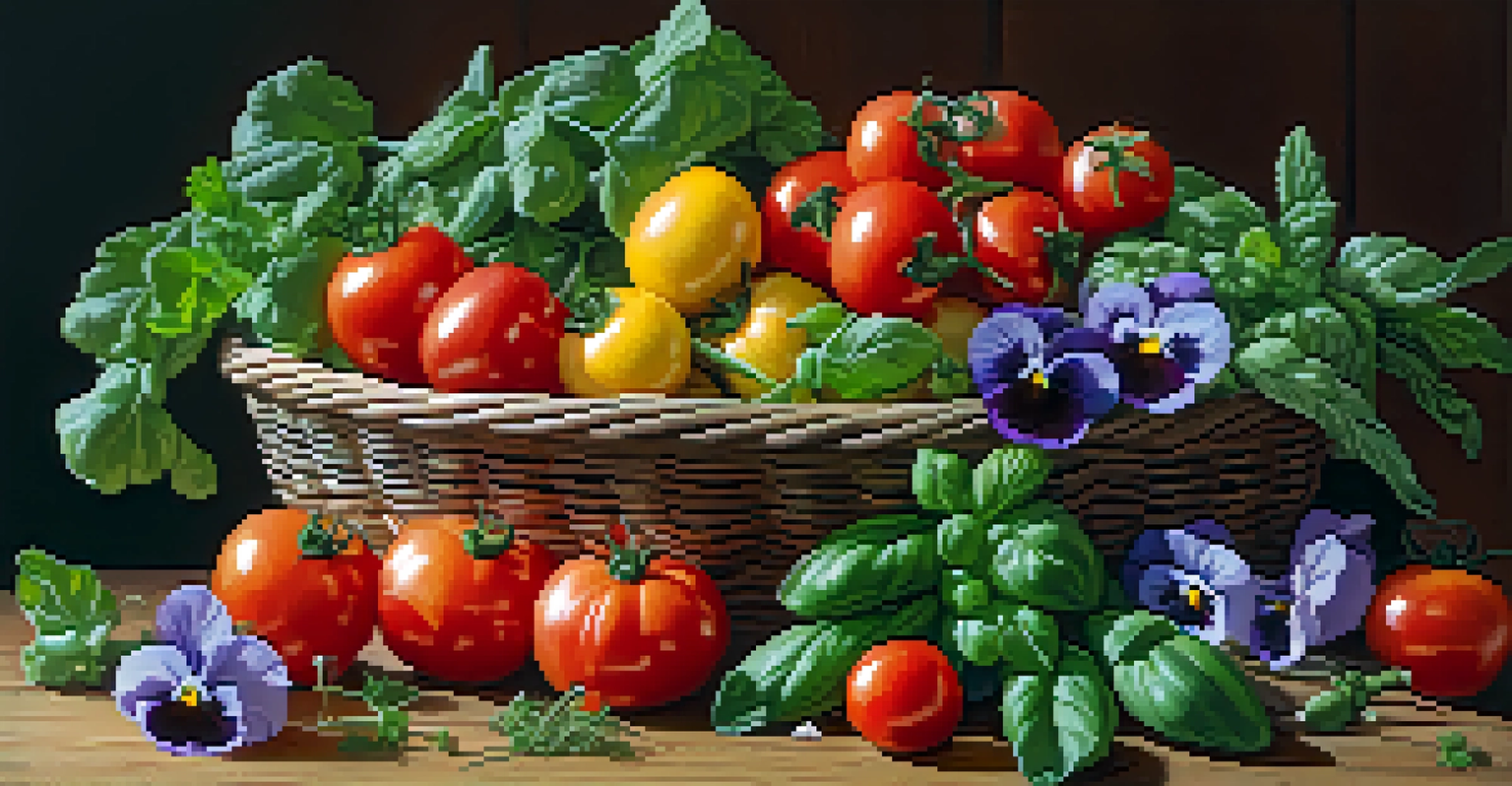Creating a Beautiful Edible Garden: Aesthetic and Nutritional Tips

Understanding the Basics of an Edible Garden
An edible garden is not just about growing vegetables; it's about creating a space that nourishes both the body and the soul. Think of it as a culinary canvas where you can cultivate fresh herbs, vibrant fruits, and colorful vegetables. This garden can be as simple as a few pots on your balcony or as expansive as a backyard plot filled with variety.
The love of gardening is a seed once sown that never dies.
The key to starting your edible garden lies in understanding the growing conditions of your space—sunlight, soil type, and water availability. For instance, if you have limited sunlight, consider shade-tolerant plants like leafy greens or herbs. This foundational knowledge will empower you to choose the right plants that will thrive in your environment.
Ultimately, your edible garden should reflect your personal taste and lifestyle. By selecting plants that you enjoy eating, you’ll be more inclined to care for them and, in turn, enjoy the fruits of your labor. A little planning goes a long way in making your garden both functional and beautiful.
Choosing the Right Plants for Aesthetics and Nutrition
When selecting plants for your edible garden, think about both aesthetics and nutrition. Colorful plants like rainbow chard and purple basil not only look stunning but also pack a nutritional punch. Mixing these vibrant plants with traditional greens can create a visually appealing palette while ensuring you’re getting a variety of nutrients.

In addition to color, consider the textures and heights of your plants. Tall sunflowers or sweet corn can provide vertical interest, while ground-hugging strawberries or creeping thyme fill in gaps and add a lush look. Arranging plants in layers creates depth and makes your garden more visually engaging.
Design Your Edible Garden Layout
Planning your garden layout enhances both functionality and aesthetics, ensuring optimal growth and beauty.
Don’t forget to incorporate fragrant herbs like rosemary and mint, which add sensory appeal. These aromatic plants can enhance the overall experience of your garden, making it a place you want to spend time in while also providing fresh ingredients for your cooking.
Designing Your Edible Garden Layout
Designing the layout of your edible garden is like creating a masterpiece. Start by sketching out your garden space, considering factors like sunlight exposure, wind direction, and accessibility for maintenance. A well-planned layout not only maximizes space but also enhances the overall beauty of your garden.
To plant a garden is to believe in tomorrow.
Consider incorporating raised beds or container gardens, which can add structure and visual interest. These options also allow for better soil control and can be placed strategically to catch the eye. If you’re short on space, vertical gardening techniques, such as wall planters or trellises, can also be stylish and space-saving.
Creating pathways or borders with stones, mulch, or bricks can define your garden and make it feel more intentional. This thoughtful design approach will help you navigate your garden easily while adding an aesthetic touch that elevates the overall experience.
Companion Planting for Healthier Gardens
Companion planting is a gardening technique that involves growing different plants together for mutual benefits. For instance, planting basil alongside tomatoes can enhance flavor while naturally deterring pests. This not only supports a healthier garden but also makes for a more productive and vibrant space.
Additionally, certain plants can enhance each other's growth. For example, marigolds are known to repel nematodes and attract beneficial insects, which can help keep your veggies safe. By understanding these relationships, you can design a garden that thrives naturally without relying heavily on chemical fertilizers or pesticides.
Choose Plants for Flavor and Beauty
Selecting colorful and nutritious plants creates a visually appealing garden that also provides delicious ingredients.
Incorporating companion planting into your edible garden also adds layers of diversity, making it a lively and attractive place to be. This approach encourages a balanced ecosystem where plants can support one another, leading to a more resilient garden overall.
Incorporating Edible Flowers for Beauty and Taste
Edible flowers are a fantastic way to add color and elegance to your garden while providing delicious flavors. Flowers like nasturtiums, pansies, and calendulas not only look stunning but also bring unique tastes to salads and dishes. Their vibrant hues can brighten up any plate, making your meals visually appealing.
Planting edible flowers is easy, and they often attract beneficial pollinators, enhancing the health of your garden. A garden brimming with blossoms not only pleases the eye but also works to sustain the ecosystem around it. Plus, with the right selection, you can enjoy both aesthetics and a delightful culinary experience.
Remember to check that the flowers are safe to eat and pesticide-free. With a little research, you can create a beautiful garden filled with blooms that are as tasty as they are lovely, ensuring that your garden is a feast for the senses.
Sustainable Practices for a Thriving Edible Garden
Sustainability plays a vital role in creating a thriving edible garden. Practicing crop rotation, composting, and using organic fertilizers can greatly improve soil health and reduce your environmental impact. These sustainable practices not only benefit your plants but also contribute to the well-being of the planet.
For example, starting a compost bin allows you to recycle kitchen scraps and yard waste, creating nutrient-rich soil for your garden. This not only reduces waste but also saves money on store-bought fertilizers. It's a win-win for both your garden and the environment.
Embrace Sustainable Gardening Practices
Implementing sustainable techniques like composting and crop rotation not only benefits your plants but also supports the environment.
Additionally, consider incorporating rainwater harvesting techniques to water your plants naturally. Sustainable gardening encourages a harmonious relationship with nature, making your garden a place of beauty and nourishment that respects the earth.
Harvesting and Enjoying Your Edible Garden’s Bounty
The moment you've been waiting for—harvesting your edible garden! This stage is incredibly rewarding as you reap the fruits of your labor. Timing is essential; harvesting at the right moment ensures maximum flavor and nutritional value. For example, picking herbs just before they flower usually yields the best taste.
Don’t be afraid to experiment with your harvest. Mixing freshly picked veggies into your meals or trying new recipes with your homegrown herbs can be an exciting way to enjoy the bounty. Sharing your produce with friends and family can also create a sense of community and appreciation for the hard work you've put into your garden.

Finally, consider preserving your harvest through methods like canning or drying. This not only extends the enjoyment of your garden's bounty but also allows you to savor those fresh flavors during off-seasons. Your edible garden is a treasure trove of both beauty and nourishment, and the joy of harvesting is just the beginning of the adventure.